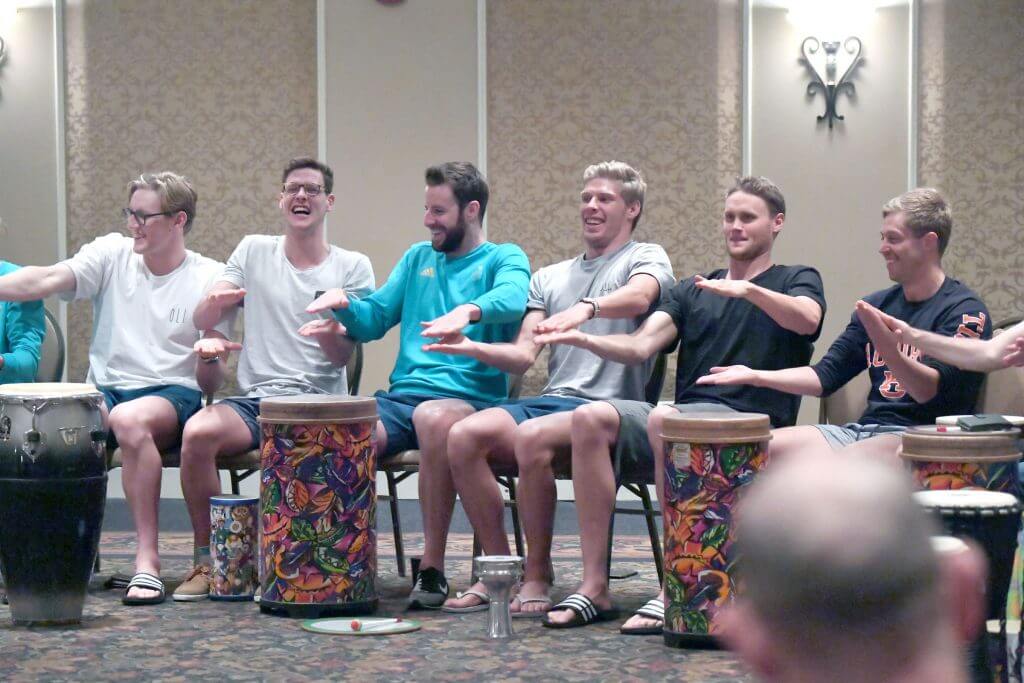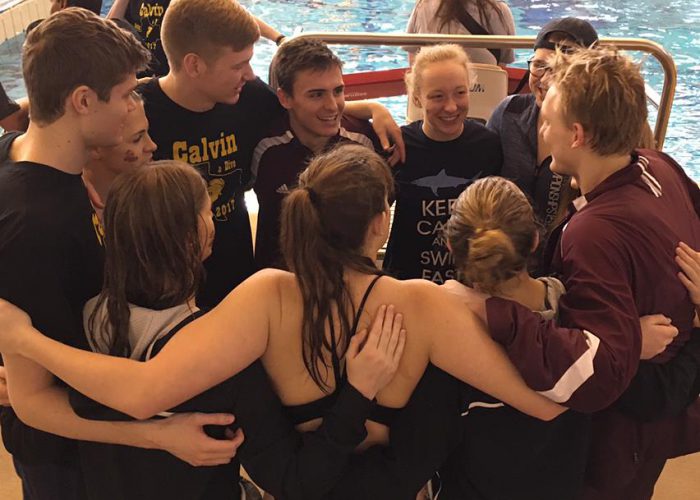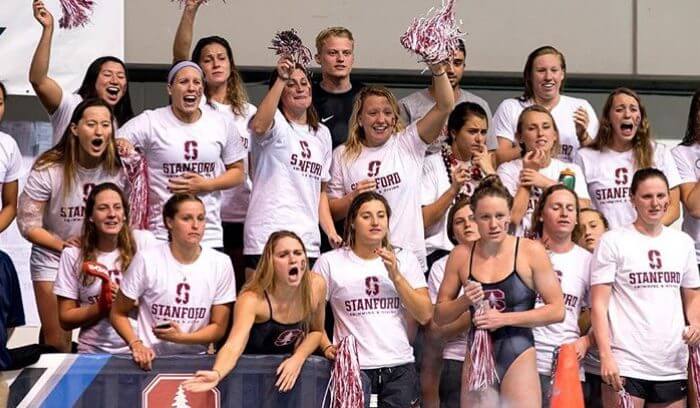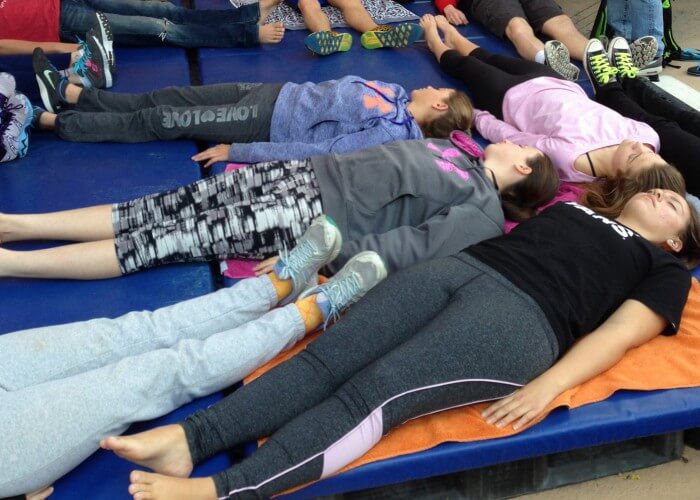4 Team Bonding Activities For Championship Season

4 Team Bonding Activities For Championship Season
By Ryan Gibbons, Swimming World College Intern.
Despite being generally an individual sport, swimming is commonly known to have an intense level of team strength and interaction. Swimmers routinely form the strongest team bonds of any sport, individual or otherwise – a direct result of intense training, high practice frequencies and durations, and long-lasting connections.
Arguably nowhere are these deep team bonds more important than during competitions, specifically during championship seasons. The support of an entire team behind an individual swim as well as the emotional strength behind relays or team scoring efforts are strong drivers of championship performance, and can even be determining factors in many swims. Similarly, the physical and emotional stress of any championship season – especially when some last upwards of six weeks – can mandate high levels of mental support to help a swimmer through, which is a direct product of team bonding exercises.
With championship season here, looking at championship-oriented team bonding exercises may provide additional assistance in preparation for the big meets. Take a look at some of these bonding activities to ensure your team has a strong sense of unity going into the taper season.
(Many of these activities can be adapted for in-season as well.)
“Circle of Trust”

Photo Courtesy: Kristy Kinzer
In a “Circle of Trust”, the entire team (or split up into major groups, such as boys and girls) sits in a circle. One by one, a member either states their goal for the championship season, makes a reflection on a positive aspect of their (or a teammate’s) season, or answers a similar unifying question set by the coach.
By providing in-depth, heartfelt responses, teams not only grow stronger to each other by sympathizing with goals or cheering for another teammate throughout the meets, but also build strong connections through compliments, reflections, and shared ideas. This is a classic yet simple bonding activity that can be incredibly effective, especially during championship seasons.
Creating Team Cheers

Photo Courtesy: Instagram, @stanfordwswim
It might not be the most sophisticated idea and can seem even frivolous on occasion, but taking the time to create positive – even humorous – team cheers can be a strong team-building activity. Acting in a non-serious fashion to create a common rallying cry can be a great bonding activity for swimmers, allowing them to both reflect on their team values and exercise some creative aspects, which is infrequently used in the sport.
In addition, using these cheers during the championship meets can be an incredible boost to the swimmers competing. Not only is any sort of cheering inspiring and motivating to a swimmer behind the block or in the water, but specifically hearing a team cheer – especially one that they helped to create – is an extra reminder of team unity. It is one that can powerfully benefit performance.
Team Dinners

Photo Courtesy: Kelley Baylis
In addition to providing a healthy level of carbohydrate loading, a team dinner also allows for the group to comfortably decompress together prior to a meet in a more casual atmosphere to discuss the upcoming season as a team.
Such an event can be combined with many other team bonding activities and can become a traditional event for many teams seeking to build interpersonal relationships leading up to a championship meet.
Group Visualization

Photo Courtesy: Annie Grevers
Any elite swimmer will testify that visualization is among the most important ingredients to a successful championship season. Taking the time to do so as a group (in an extraordinarily relaxed and stress-free environment) can not only provide this individual benefit but also deepen ties between teammates.
Putting oneself in as emotionally open a situation as a group visualization session can create a sense of unity and empathy between teammates, who may at other times struggle to identify common ties. Breaking down the emotional basics of the sport while in a group can create a common positive mindset entering a championship season and can be a bonding factor in an otherwise hectic time.
Many of these activities can be implemented during the championship season as well as during regular training. As team connections become vitally important during taper seasons, taking the time to do some of these activities can become a great benefit for each and every member of a team.
All commentaries are the opinion of the author and do not necessarily reflect the views of Swimming World Magazine nor its staff.




Kendall Jacobs